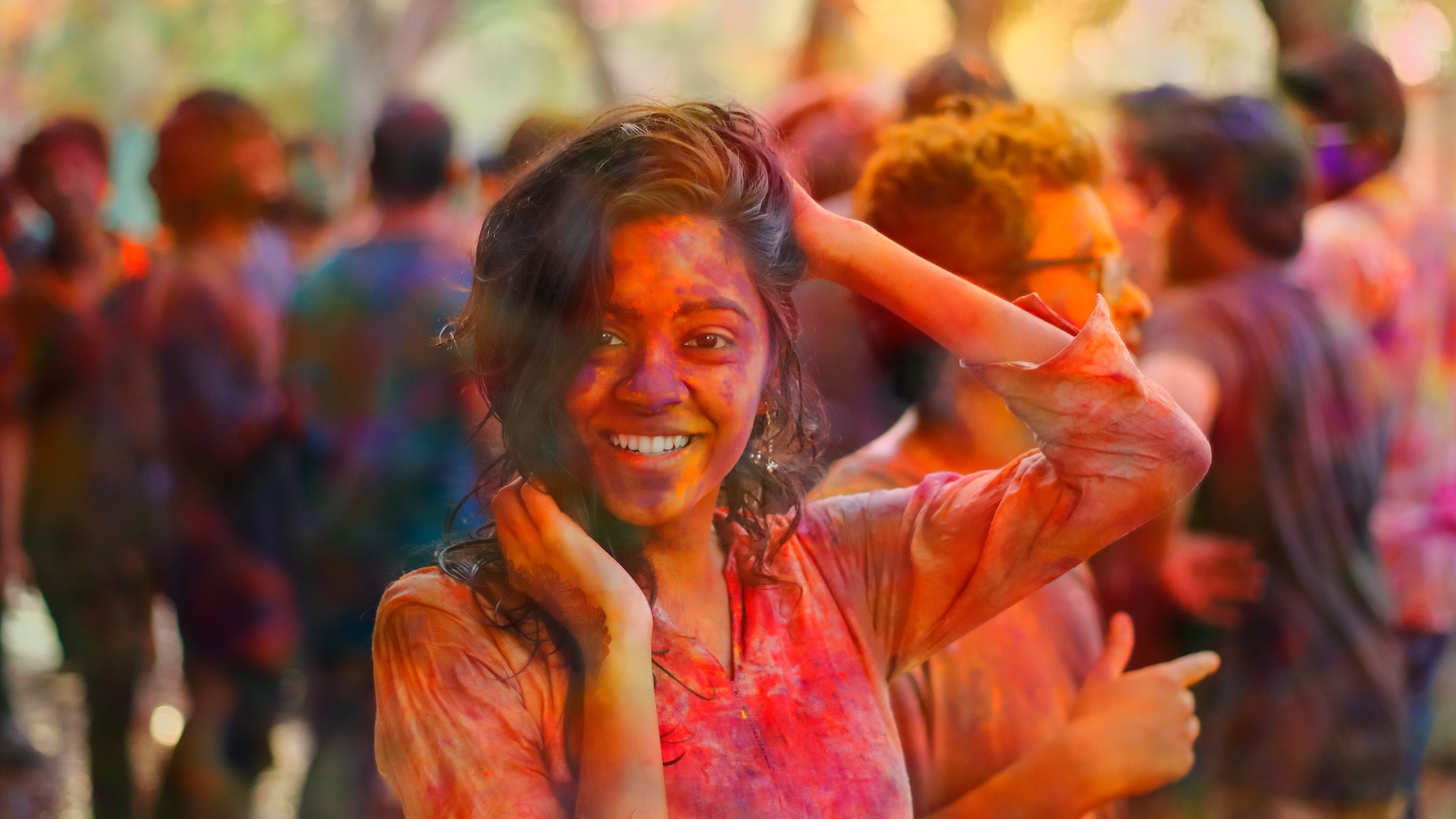
It’s part of the lure of India for the rest of the world—a holiday that is played out with cinematic beauty in thousands of Bollywood films. Holi is a day that intrigues the child in all of us. Social media is flooded with images of Indians laughing and celebrating, stained with every color of the rainbow. In a country that often brings to mind serious issues, Holi reminds me that India does not neatly fit into any preconceived box.
Our first Holi in India, my family of five ventured to a town in the north where we stayed in a small, family-owned hotel. The owner of the hotel insisted we join his family’s Holi celebration. Our wide-eyed young boys were given water guns and bags of brightly colored powder so they could join in the festivities.
What kid doesn’t love throwing water balloons from balconies, being playfully shot with water guns by passers-by, and having neighbors rub colored powder on his face while feeding him sweets? My boys quickly joined the chaos, smearing powder on and drenching anyone brave enough to get within range of their water guns. They “played Holi” the entire day just as the locals do, “getting” friends and family with color and water.
On the surface, it all just looks fun. A big party. India at its most colorful and vibrant. Everyone seemingly equal and enjoying the day together. But Holi is a Hindu holiday, and nothing in Hinduism is quite that simple.
The Story and Spirit of Holi
Try to research Holi and you will find a mile-long list of all it is meant to represent, from the celebration of spring and new beginnings to a day to forgive and seek forgiveness. One commonly held belief, however, is that the name Holi comes from the Hindu demoness named Holika.
According to Hindu mythology, Holika built a pyre on which to burn her nephew because he would only worship the Hindu god Vishnu and not Holika’s evil brother. She had a special cape that kept her from being burned, so she held her nephew in her lap while sitting on the fire. But the cape fell off her and onto him, resulting in her death and his safety.
Therefore, in India and other South Asian countries, on the night before Holi, people gather wood and light bonfires in parks, temple complexes, and alongside the road. The fire serves as a reminder of the perceived victory of good over evil, demonstrated in the nephew’s deliverance and Holika’s demise.
After experiencing several Holi celebrations, I also see the modern, secular spin younger generations have given the holiday. Today’s Holi celebrations seem to be more about people putting aside caste, gender, and socioeconomic mores as they gather to eat, drink, and play. It’s a permissible pause button on the stresses of life that encourages them to forget socially constructed differences for the sake of merriment.
The Struggle Remains Real
Despite the pomp of Holi, when the bonfires die and color stains on skin fade, a unified India slowly breaks down into groups separated by caste, economic realities, and religious differences. It’s sad, but it’s also very human.
“The gospel is the great equalizer of all people.”
Every year, people’s noble efforts become a blur of futile ambitions because Holi can never be the great unifier of all people. People will continue to struggle and desire greater things because the premise behind their celebration is insufficient. Mankind can’t muster enough willpower to stay unified. There is nothing within any of us to sustain unity with one another or achieve victory over evil.
The spirit of Holi can never be more than a veneer because it’s not based on the gospel, the ultimate unifier and the greatest, purest example of forgiveness. The gospel is the great equalizer of all people—all have sinned and fall short of the glory of God, all are in need of his grace and salvation, and all who follow Jesus are righteous before God. He doesn’t view us through the lens of class or “goodness” but rather through our faith in his Son.
When the Colors Fade
The morning after Holi, the temples in India once again overflow with worshipers giving offerings and doing what they think is necessary to ward off evil and earn forgiveness for their sins. So good has not really won. Evil is still alive and well. Its presence is palpable through the dark acts of worship and devotion to the millions of idols that adorn skylines, homes, businesses, vehicles, and hearts across this land. The yearning for freedom exposes an enslavement to rituals, fear, and bondage.
Yet God, who is rich in mercy, has bought our freedom and theirs with his blood. This is the most beautiful and complete picture of forgiveness. May Christ’s church proclaim the good news that overcomes and outshines the cacophony of lies that seek to drown out the truth. May many who would seek forgiveness in empty sources instead come to know the one true God and experience real freedom through Christ, who brings peace, hope, and joy every day of the year. Now, and for eternity.
Madison Strauder enjoys sharing stories from her travels around South Asia.

